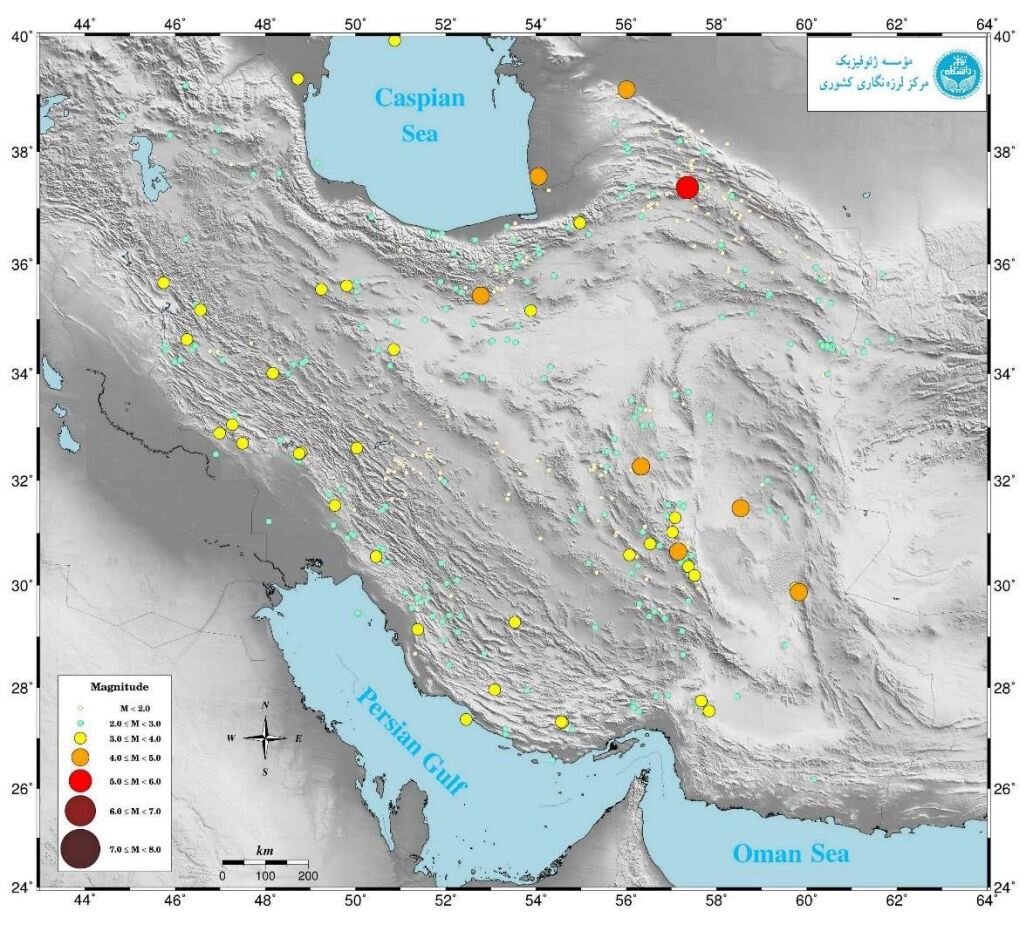Almost 620 earthquakes occur in a month

TEHRAN –A total of 619 earthquakes have been recorded across the country over the past calendar month that ended on October 21, according to the seismological networks of the Institute of Geophysics of the University of Tehran.
The epicenter of 18 earthquakes was in neighboring countries, namely Afghanistan (4), Turkmenistan (8), Iraq (2), Azerbaijan (2), Russia (1), and Armenia (1).
Of the total quakes, 1 had a magnitude of 5.1 on the Richter scale which occurred on September 22 with the epicenter in Bojnourd City, the capital of North Khorasan province.
Statistically, 277 earthquakes with magnitudes smaller than 2; 282 earthquakes with magnitudes between 2 and 3; 48 earthquakes with magnitudes between 3 and 4, and 11 earthquakes with magnitudes between 4 and 5 have occurred in the country.
Among the provinces of the country, North Khorasan with 117, Khorasan Razavi with 78, Kerman with 64, and Yazd with 62 recorded the highest number of earthquakes in the country.
A total of 6,949 earthquakes were recorded across the country over the past calendar year (March 2023 –March 2024) according to the Seismological networks of the Institute of Geophysics of the University of Tehran.
Most of the earthquakes happened respectively in the north-eastern Khorasan Razavi, south-eastern Kerman, north-western West Azarbaijan, and eastern South Khorasan provinces, ISNA reported.
Statistically, 2,268 earthquakes were less than 2 on the Richter scale; 3,685 were between 2 and 3; 796 were between 3 and 4; 181 were between 4 and 5; 22 were between 5 and 6; and 5 were between 6 and 7.
The Iranian plateau is located in a very seismically active region of the world and is known not only for its major catastrophic earthquakes but also for the disasters relating to natural hazards, especially earthquakes.
About 2 percent of the earthquakes in the world occur in Iran but more than 6% of the victims of the world earthquakes during the 20th century are reported from Iranian earthquakes.
This shows the high level of vulnerability in Iran, according to Mehdi Zare, a professor of engineering seismology
Iran has entered a decade of earthquakes since the [Iranian calendar] year 1396 (March 2017-March 2018), as the Iranian plateau is shrinking by 30 millimetres per year, Mehdi Zare, professor of engineering seismology at the International Institute of Earthquake Engineering and Seismology (IIEES), has said.
The Strait of Hormuz region in the south of Iran has the highest seismic activity in the region and its formation is related to the continuation of the convergent movement between the Arabian plate and the central continental plate of Iran.
Tehran is also one of the most hazardous metropolises in the world in terms of the risk of different natural disasters, such as earthquakes, floods, subsidence, drought, landslides, fire following an earthquake, etc.
On the other hand, Tehran has a night-time population of over 8,300,000 with a mixture of old non-resistant structures as well as modern high-rise buildings that affect the vulnerability of this city.
MT/MG
